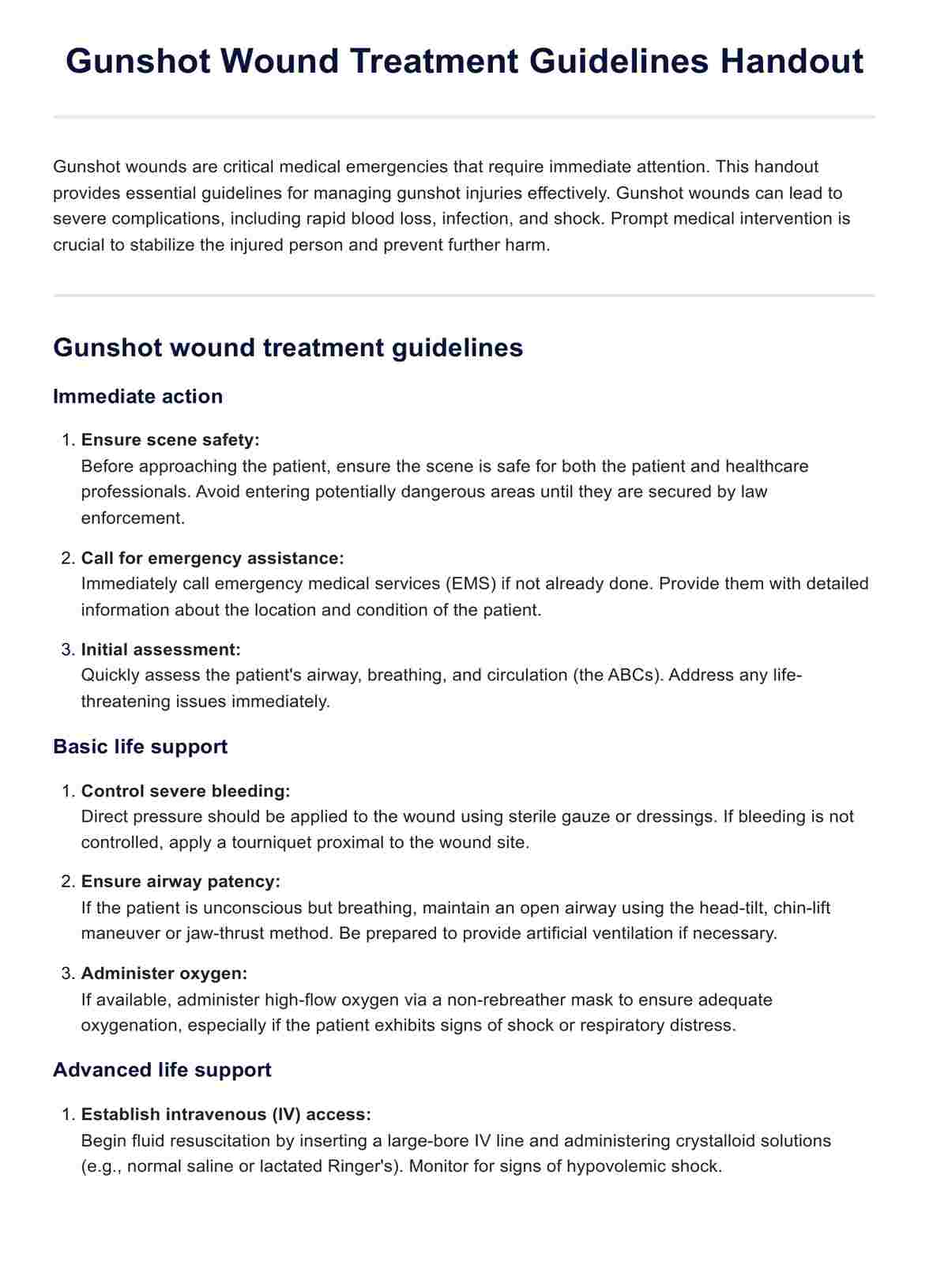The healing time for a gunshot wound to the arm depends on various factors, including the severity of the injury and individual healing capacity. In general, it may take several weeks to months for a gunshot wound to the arm to heal completely.

Gunshot Wound Treatment Guidelines Handout
Access Carepatron's free PDF download of gunshot wound treatment guidelines handout. Learn how to treat gunshot wounds and save lives properly.
Gunshot Wound Treatment Guidelines Handout Template
Commonly asked questions
A gunshot wound is an injury caused by a bullet or other projectile fired from a firearm. It typically involves penetration of the skin and underlying tissues, resulting in tissue damage and potential complications.
The survival rate for a gunshot wound to the head varies widely depending on factors such as the location and severity of the injury. Generally, gunshot wounds to the head have a high mortality rate, with survival often depending on prompt medical intervention and the extent of brain damage.
EHR and practice management software
Get started for free
*No credit card required
Free
$0/usd
Unlimited clients
Telehealth
1GB of storage
Client portal text
Automated billing and online payments











